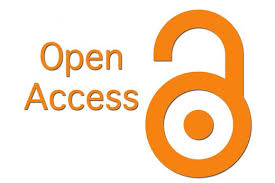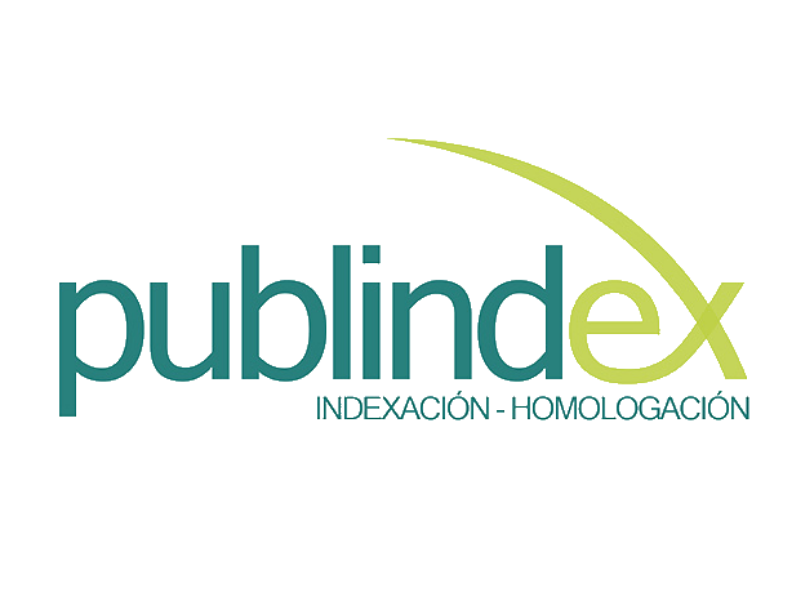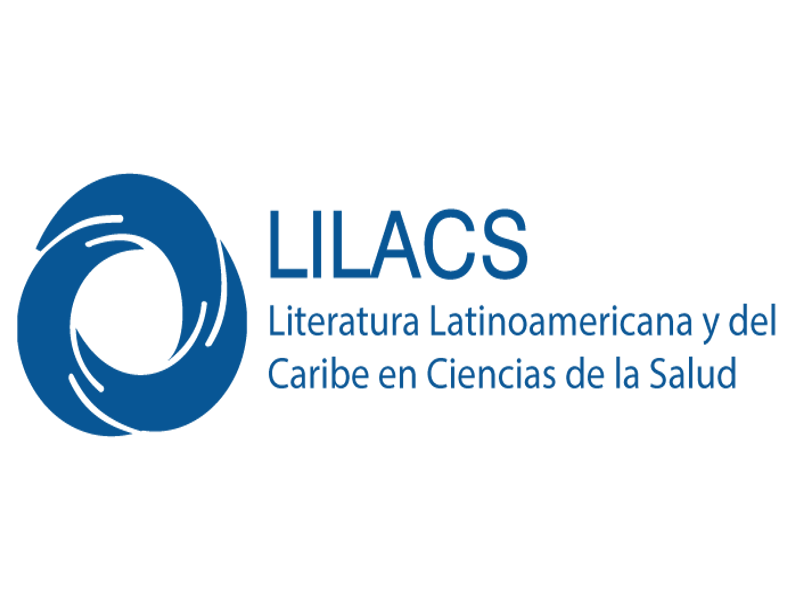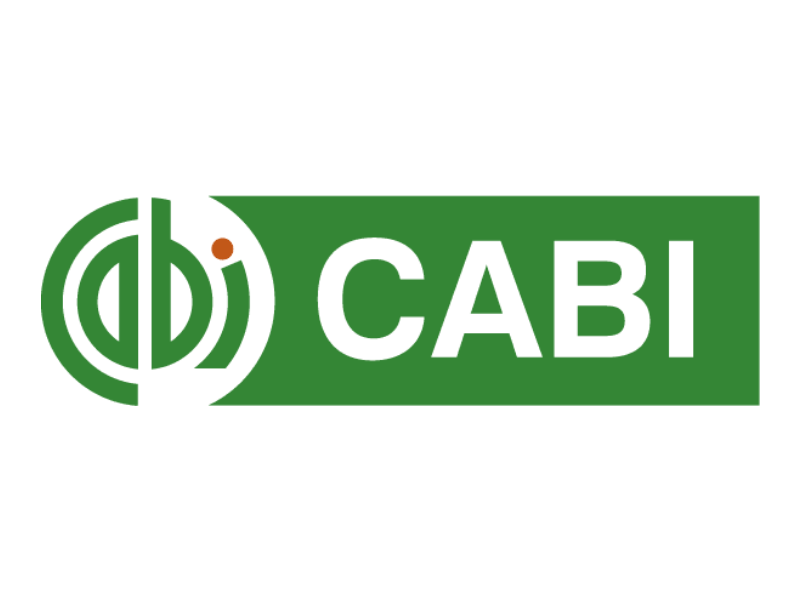Characterization of pediatric patients with cleft lip and/or cleft palate in a regional hospital in southern Colombia
Caracterización de la población pediátrica con labio y/o paladar hendido en un hospital regional del sur colombiano
![]()
![]()

Show authors biography
Introduction: cleft lip (CL), and cleft palate (CP) or combined cleft lip and palate (CLP) are a group of congenital anomalies caused by the failure of fusion of embryonic tissues. Objective: to characterize the pediatric population with cleft lip and/or palate. Materials and methods: a retrospective cross-sectional observational descriptive study conducted during 2022 in a regional hospital. Results: 42 patients were included, predominantly females, the majority were non-syndromic, two died due to other congenital malformations and molecular detections such as the NOTCH1 variant and Xq26.32 and 4q32.3-q34.3 microdeletions were identified in three patients. The diagnosis was postnatal (95%). Unilateral CLP of the left side was the most common cleft type. Gender distribution showed that CLPs occurs more frequently in males, CPs in females, while CL occurs in both genders in equal numbers. Risk factors identified were alcohol intake (2%), pesticide exposure (12%) and family history of orofacial clefts (13%). The mean age at first surgical repair was 18 months, cheiloplasty (24%) being the main procedure performed, requiring an average of 2 surgical interventions, with complications in 33%. Discussion: most cases were non-syndromic, which correlates with the epigenetic component of this entity, the frequency of the type of lesions and their gender distribution differs from the existing epidemiology reports. Conclusion: prenatal testing for these conditions and optimizing the age at first surgical repair, are recommended.
Article visits 212 | PDF visits 129
Downloads
- Fell M, Dack K, Chummun S, Sandy J, Wren Y, Lewis S. Maternal Cigarette Smoking and Cleft Lip and Palate: A Systematic Review and Meta-Analysis. Cleft Palate Craniofac J. 2022;59(9):1185–1200. https://doi.org/10.1177/10556656211040015 DOI: https://doi.org/10.1177/10556656211040015
- Téllez-Conti C, Mora-Diaz II, Díaz-Báez D, Ocampo-Arias IJ, Jiménez-Luna NE, Niño-Paz JC, et al. Craniofacial Growth Analysis of Individuals With and Without Cleft Lip and Palate in Colombia. Cleft Palate Craniofac J. 2022;59(5):577–88. https://doi.org/10.1177/10556656211013690. DOI: https://doi.org/10.1177/10556656211013690
- Salari N, Darvishi N, Heydari M, Bokaee S, Darvishi F, Mohammadi M. Global prevalence of cleft palate, cleft lip and cleft palate and lip: A comprehensive systematic review and meta-analysis. J Stomatol Oral Maxillofac Surg. 2022;123(2):110–120. https://doi.org/10.1016/j.jormas.2021.05.008. DOI: https://doi.org/10.1016/j.jormas.2021.05.008
- Worley ML, Patel KG, Kilpatrick LA. Cleft Lip and Palate. Clin Perinatol. 2018;45(4):661–78. https://doi.org/10.1016/j.clp.2018.07.006. DOI: https://doi.org/10.1016/j.clp.2018.07.006
- Vu GH, Warden C, Zimmerman CE, Kalmar CL, Humphries LS, McDonald-McGinn DM, et al. Poverty and Risk of Cleft Lip and Palate: An Analysis of United States Birth Data. Plast Reconstr Surg. 2022;149(1):169–82. https://doi.org/10.1097/PRS.0000000000008636. DOI: https://doi.org/10.1097/PRS.0000000000008636
- Zhou X, Jiang Y, Fang J, Wang H, Xie D, Kuang H, et al. Incidence of cleft lip and palate, and epidemiology of perinatal deaths related to cleft lip and palate in Hunan Province, China, 2016–2020. Sci Rep. 2023;13(1)10304. https://doi.org/10.1038/s41598-023-37436-y. DOI: https://doi.org/10.1038/s41598-023-37436-y
- An H, Jin M, Li Z, Zhang L, Zhang Y, Li H, et al. Association of gestational hypertension and preeclampsia with nonsyndromic orofacial clefts in China: a large prospective cohort study. J Hypertens. 2022;40(7):1352–1358. https://doi.org/10.1097/HJH.0000000000003150. DOI: https://doi.org/10.1097/HJH.0000000000003150
- Tettamanti L, Avantaggiato A, Nardone M, Palmieri A, Tagliabue A. New insights in orofacial cleft: epidemiological and genetic studies on italian samples. Oral Implantol (Rome). 2017;10(1):11–9. https://doi.org/10.11138/orl/2017.10.1.011. DOI: https://doi.org/10.11138/orl/2017.10.1.011
- Askarian S, Gholami M, Khalili-Tanha G, Tehrani NC, Joudi M, Khazaei M, et al. The genetic factors contributing to the risk of cleft lip-cleft palate and their clinical utility. Oral Maxillofac Surg. 2023;27(2):177–186. https://doi.org/10.1007/s10006-022-01052-3. DOI: https://doi.org/10.1007/s10006-022-01052-3
- Turlapati S, Krishna S, Deepak KU, Kanagaraja B, Gayathri KA, Jahagirdar D. A Cross-Sectional Study: Are Myths on Cleft Lip and Palate Still Prevalent?. Cureus. 2021;13(11). https://doi.org/10.7759/cureus.19579. DOI: https://doi.org/10.7759/cureus.19579
- Nahas LD, Alzamel O, Dali MY, Alsawah R, Hamsho A, Sulman R, et al. Distribution and risk factors of cleft lip and palate on patients from a sample of Damascus hospitals - A case-control study. Heliyon. 2021;7(9):e07957. https://doi.org/10.1016/j.heliyon.2021.e07957. DOI: https://doi.org/10.1016/j.heliyon.2021.e07957
- Davies KJM, Richmond S, Medeiros-Mirra RJ, Abbas HH, Wilson-Nagrani CE, Davis MG, et al. The effect of maternal smoking and alcohol consumption on lip morphology. J Orthod. 2022;49(4):403–11. https://doi.org/10.1177/14653125221094337. DOI: https://doi.org/10.1177/14653125221094337
- Lee KS, Choi YJ, Cho J, Lee H, Lee H, Park SJ, et al. Environmental and Genetic Risk Factors of Congenital Anomalies: an Umbrella Review of Systematic Reviews and Meta-Analyses. J Korean Med Sci. 2021;36(28):1–24. https://doi.org/10.3346/jkms.2021.36.e183. DOI: https://doi.org/10.3346/jkms.2021.36.e183
- Cano Granada LL, Gómez Gil LJ. Caracterización de los pacientes con labio y paladar hendido (LPH) de la IPS Fundación Clinica Noel, 2013 – 2018 [Tesis Maestría]. Medellín: Universidad de Antioquia: 2019.
- Borg TM, Hong S, Ghanem A. Cleft Lip and Palate Repair Training to Bridge the Gap in Low-Income Countries. J Craniofac Surg. 2022;33(5):1331–4. https://doi.org/10.1097/SCS.0000000000008420. DOI: https://doi.org/10.1097/SCS.0000000000008420
- Balushi T Al, Sahib M, Abduwani Z Al, Viswapurna PS, Zeinalddin M. Characteristic of Cleft Lip and Palate Cases Attended to Khoula Hospital Cleft Center. J Craniofac Surg. 2022;33(2):E171–3. https://doi.org/10.1097/SCS.0000000000008235. DOI: https://doi.org/10.1097/SCS.0000000000008235
- Wang QQ, He CY, Mei J, Xu YL. Epidemiology of Birth Defects in Eastern China and the Associated Risk Factors. Med Sci Monit. 2022;28:e933782-1. https://doi.org/10.12659/MSM.933782 DOI: https://doi.org/10.12659/MSM.933782
- Bronberg R, Groisman B, Bidondo MP, Barbero P, Liascovich R. Birth prevalence of congenital anomalies in Argentina, according to socioeconomic level. J Community Genet. 2021;12(3):345. https://doi.org/10.1007/s12687-021-00516-5. DOI: https://doi.org/10.1007/s12687-021-00516-5
- Departamento Administrativo Nacional de Estadística DANE. Pobreza monetaria y pobreza monetaria extrema [Internet]. Colombia; 2022 Available from: https://www.dane.gov.co/index.php/estadisticas-por-tema/pobreza-y-condiciones-de-vida/pobreza-monetaria
- Jamilian A, Sarkarat F, Jafari M, Neshandar M, Amini E, Khosravi S, Ghassemi A. Family history and risk factors for cleft lip and palate patients and their associated anomalies. Stomatologija. 2017;19(3):78-83.
- Kruppa K, Krüger E, Vorster C, der Linde J van. Cleft Lip and/or Palate and Associated Risks in Lower-Middle-Income Countries: A Systematic Review. Cleft Palate Craniofac J. 2022;59(5):568–76. https://doi.org/10.1177/10556656211018952 DOI: https://doi.org/10.1177/10556656211018952
- Abu-Amero KK, Kondkar AA, Alorainy IA, Khan AO, Al-Enazy LA, Oystreck DT, et al. Xq26.3 microdeletion in a male with Wildervanck Syndrome. Ophthalmic Genet. 2014;35(1):18-24. https://doi.org/10.3109/13816810.2013.766218 DOI: https://doi.org/10.3109/13816810.2013.766218
- Pappalardo XG, Ruggieri M, Falsaperla R, Savasta S, Raucci U, Pavone P. A Novel 4q32.3 Deletion in a Child: Additional Signs and the Role of MARCH1. J Pediatr Genet. 2021;10(4):259. https://doi.org/10.1055/s-0041-1736458. DOI: https://doi.org/10.1055/s-0041-1736458
- Pakvasa M, Haravu P, Boachie-Mensah M, Jones A, Coalson E, Liao J, et al. Notch signaling: Its essential roles in bone and craniofacial development. Genes Dis. 2021;8(1):8. https://doi.org/10.1016/j.gendis.2020.04.006. DOI: https://doi.org/10.1016/j.gendis.2020.04.006
- Kurita H, Motoki N, Inaba Y, Misawa Y, Ohira S, Kanai M, et al. Maternal alcohol consumption and risk of offspring with congenital malformation: the Japan Environment and Children’s Study. Pediatr Res. 2021;90(2):479–86. https://doi.org/10.1038/s41390-020-01274-9. DOI: https://doi.org/10.1038/s41390-020-01274-9
- Yin X, Li J, Li Y, Zou S. Maternal alcohol consumption and oral clefts: a meta-analysis. Br J Oral Maxillofac Surg. 2019;57(9):839–46. https://doi.org/10.1016/j.bjoms.2019.08.013. DOI: https://doi.org/10.1016/j.bjoms.2019.08.013
- Galeh SD, Nouri-Vaskeh M, Alipour M, Fakhim SA. Clinical and Demographical Characteristics of Cleft Lip and/or Palate in the Northwest of Iran: An Analysis of 1500 Patients. Cleft Palate Craniofac J. 2021;58(10):1281–6. https://doi.org/10.1177/1055665620980633. DOI: https://doi.org/10.1177/1055665620980633
- Mbuyi-musanzayi S, Kayembe TJ, Kashal MK, Lukusa PT, Kalenga PM, Tshilombo FK, et al. Non-syndromic cleft lip and/or cleft palate: Epidemiology and risk factors in Lubumbashi (DR Congo), a case-control study. J Craniomaxillofac Surg. 2018;46(7):1051–8. https://doi.org/10.1016/j.jcms.2018.05.006. DOI: https://doi.org/10.1016/j.jcms.2018.05.006
- Suhl J, Romitti PA, Rocheleau C, Cao Y, Burns TL, Conway K, et al. Parental occupational pesticide exposure and nonsyndromic orofacial clefts. J Occup Environ Hyg. 2018;15(9):641–53. https://doi.org/10.1080/15459624.2018.1484127. DOI: https://doi.org/10.1080/15459624.2018.1484127
- Silvestre CMR, Silva AMC, Ferreira Da Silva RCG, Bittencourt WS, Borba AM, Fernandes V, et al. Environmental Factors at the Periconceptional Period and the Occurrence of Cleft Lip and Palate in a Midwest Brazil Population: A Case-Control Study. J Occup Environ Med. 2022 Nov 1;64(11):E751–6. https://doi.org/10.1097/JOM.0000000000002689 DOI: https://doi.org/10.1097/JOM.0000000000002689
- Garland MA, Reynolds K, Zhou CJ. Environmental mechanisms of orofacial clefts. Birth Defects Res. 2020;112(19):1660-1698. https://doi.org/10.1002/bdr2.1830. DOI: https://doi.org/10.1002/bdr2.1830
- Hong Y, Xu X, Lian F, Chen R. Environmental Risk Factors for Nonsyndromic Cleft Lip and/or Cleft Palate in Xinjiang Province, China: A Multiethnic Study. Cleft Palate Craniofac J. 2021 Apr 1;58(4):489–96. https://doi.org/10.1177/1055665620956869. DOI: https://doi.org/10.1177/1055665620956869
- Jahanbin A, Shadkam E, Miri HH, Shirazi AS, Abtahi M. Maternal Folic Acid Supplementation and the Risk of Oral Clefts in Offspring. J Craniofac Surg. 2018;29(6):e534-e541. https://doi.org/10.1097/SCS.0000000000004488. DOI: https://doi.org/10.1097/SCS.0000000000004488
- Jayarajan R, Natarajan A, Nagamuttu R. Efficacy of Periconceptional High-Dose Folic Acid in Isolated Orofacial Cleft Prevention: A Systematic Review. Indian J Plast Surg. 2019;52(2):153-159. https://doi.org/10.1055/s-0039-1696864. DOI: https://doi.org/10.1055/s-0039-1696864
- Jahanbin A, Shadkam E, Miri HH, Shirazi AS, Abtahi M. Maternal Folic Acid Supplementation and the Risk of Oral Clefts in Offspring. J Craniofac Surg. 2018;29(6):e534–41. https://doi.org/10.1097/SCS.0000000000004488. DOI: https://doi.org/10.1097/SCS.0000000000004488
- Johnson MM. Prenatal Imaging for Cleft Lip and Palate. Radiol Technol. 2019;90(6):581-596.
- Sreejith V, Arun V, Devarajan A, Gopinath A, Sunil M. Psychological effect of prenatal diagnosis of cleft lip and palate: A systematic review. Contemp Clin Dent. 2018;9(2):304. https://doi.org/10.4103/ccd.ccd_673_17. DOI: https://doi.org/10.4103/ccd.ccd_673_17
- Sosa-Vesga CD, Arenas-Camacho LD, Moreno González CA, Nazar-Meneses FJ, Pimiento Macías AF, Téllez Gamarra DA, et al. Complicaciones postquirúrgicas en intervenciones correctivas de labio y paladar hendido en pacientes pediátricos de un hospital de tercer nivel en Bucaramanga, Colombia 2013-2016. Médicas UIS. 2018;31(2):25–32. https://doi.org/10.18273/revmed.v31n2-2018003. DOI: https://doi.org/10.18273/revmed.v31n2-2018003
- Rengifo Reina HA, Guarnizo Peralta SB. Analysis of the Prevalence and Incidence of Cleft Lip and Palate in Colombia. 2019;57(5):552–559. https://doi.org/101177/1055665619886455. DOI: https://doi.org/10.1177/1055665619886455
- Alois CI, Ruotolo RA. An overview of cleft lip and palate. JAAPA. 2020;33(12):17–20. https://doi.org/10.1097/01.JAA.0000721644.06681.06. DOI: https://doi.org/10.1097/01.JAA.0000721644.06681.06
- Ma L, Hou Y, Liu G, Zhang T. Effectiveness of presurgical orthodontics in cleft lip and palate patients with alveolar bone grafting: A systematic review. J Stomatol Oral Maxillofac Surg. 2021;122(1):13–17. https://doi.org/10.1016/j.jormas.2020.07.010. DOI: https://doi.org/10.1016/j.jormas.2020.07.010
- Maximino LP, Marcelino FC, Cavalheiro MG, Abramides DVM, Caldana ML, Corrêa CC, Lauris JRP, Feniman MR. Auditory and language skills in children with cleft lip and palate. Acta Otorrinolaringol Esp (Engl Ed). 2021;73(3):157-163. https://doi.org/10.1016/j.otorri.2020.11.002. DOI: https://doi.org/10.1016/j.otorri.2020.11.002












